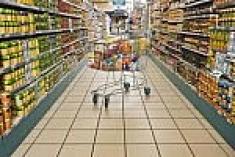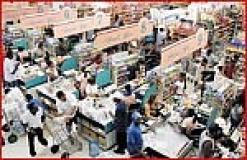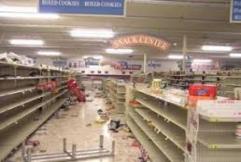-
Your Government
-
- City Council Boards & Commissions Public Meetings & Minutes Municipal Code City News
- Departments Administration Building City Recorder Elections Engineering Finance Human Resources Library
- Departments Municipal Court Parks & Recreation Planning Police Public Works Reservoir Project Urban Renewal Utilities
-
-
Our Community
-
- About St. Helens History of St. HelensState of the CityCourthouse Dock Camera
- Local Events City Calendar Community Day in the Park13 Nights on the RiverIndependence Day Celebration Spirit of HalloweentownRecreation Activities Sand Island CampingKeep It Local CC
- Community Resources City Newsletter City Social Media Emergency Services New Resident InformationProtecting Our Environment
-
-
Business & Development
-
- Local Business Directory Get a Business License City Bids & RFPs Broadband Study
- Business in St. Helens St. Helens Advantages Directions & Transportation Incentives & Financing Resources for Businesses Business Guide Columbia Economic Team Chamber of Commerce
- Current City Projects Waterfront Redevelopment Public Safety Facility Strategic Work Plan
-
-
How Do I?
-
- Apply for a Job Apply for a Committee Find A Park Find COVID Info Find Forms Follow St. Helens - Facebook Follow St. Helens - Twitter Follow St. Helens - YouTube
- Get a Police Report Get a Business License Get a Library Card Get a Building Permit Newsletter Signup Past Public Meetings Pay My Water Bill
- Public Records Request Report a Nuisance Register for Rec Activity Reserve a Park Sign Up for the 911 Alerts Universal Fee Schedule
-
Preparing Your 'Bug Out Kit' or "To Go" bag



When looking at the pictures above, when would you say would be the best time to start preparing your "To Go" bag or "bug out" kit? I prefer the picture on the left, a calm, empty day at the store! With all the regular major storm or weather disturbances and the devastating paths of destruction we are seeing occurring more and more frequently on the news, did you know that still 90% of people living in the United States DO NOT HAVE AN EMERGENCY BAG READY TO GRAB?
The majority of our friends and neighbors will join the rush of racing to stores to gather supplies AFTER the disaster has occurred, or, they hope that the Red Cross or FEMA will be there to supply them with the food, water, clothing and emergency supplies and shelter.
Living here in Oregon it might seem that we are tucked away out of harms path and not too much could really happen to us here. WRONG! We could get hit with a surprise, out of nowhere, winter’s storm? Gail force winds even rocking the interior far away from the coast? Deep, wet, unexpected snow falling even in Portland, blocks the roads and highways, collapses store roofs, high winds blow down trees and knock out electric power lines, also blocking roads. Rapidly changing conditions causes unseasonably warm rain to fall, adding not only weight to the snow, but causes the snow to melt rapidly. Now we have flash floods, roads washing out, landslides and parking lots becoming moving lakes of water. The mudslides are filled with tree debris, rocks and then, the report that more rain or more snow is on the way.
Perhaps you one of the fortunate ones sitting in a warm, secure home with the TV on seeing these reports? While viewing these scenes on TV, did the thought even occur to you that "if that were happening just outside your own door, are you ready for an unexpected disaster?" Do you have your "To Go Bag" ready???
Be Prepared Not Scared
Although we cannot prevent disasters, we can certainly prepare for them. If you are prepared with food and water, an emergency can be an inconvenience, but not a disaster. Everyone has a personal responsibility to be prepared. Creating an emergency plan ahead of time for you and your family will help you stay organized if an emergency situation strikes. The food items you might want to collect for your "to go bag, would be items that require no refrigeration, very little preparation or cooking, with very little or even no water. Your water supply should be at least 1 gal. of water per person per day for at least 5 days. There are some suggestions of food items that you might want to consider acquiring a few paragraphs later in this article.
Preparing your emergency plan
Your emergency plan should include a communication system, disaster supply kit, and an alternate meeting place if your home becomes unsafe. Depending on the severity of the disaster or emergency, you may need to evacuate where you live. When an emergency situation occurs, it is recommended that you seek refuge with a friend or family member located away from the affected area. You’ll be more comfortable on a friend’s couch than on a cot in a shelter.
Where does one start?
Don’t think that you have to get everything all at once. Start with what you have and build from there. It’s better to have at least a start on your supplies rather than procrastinate until you “can get it all in one big shopping trek.” Plan to be on your own for a minimum of 3 days or 72 hours following a disaster! There is a very good possibility there will be no electricity, water and possibly no phone service. The better prepared you are, the better position you will be in to help your family and neighbors. There are seven basic supplies you should have in the event of a disaster or emergency:
1) Water
2) Food
3) Basic First Aid
4) Tools
5) Clothing and Bedding
6) Special Personal Items (medical prescriptions, etc.)
7) Mini-Survival Kit or “Go-Kit”. Do you have a durable storage container. suggestions:
- Family ice chest or a cooler with wheels?
- Heavy duty Rubbermaid or Sterilite storage containers?
- Clean plastic garbage can with wheels and a lid?
- Gym bag, duffel bag or backpack?
Water, how much water? FEMA, Red Cross and Department of Homeland Security recommends a minimum of 1 gallon of water per person per day for drinking. In a disaster, water supplies may be cut off or contaminated. Store enough water for everyone in your family to last for at least 3 days. Remember to give yourself enough water for drinking and limited cooking and personal hygiene. What do I need to gather, store or filter water? Suggestions:
- Portable water filtration cartridges or straws.
- Tap water from a municipal water system can be safely stored without additional treatment.
- Store water in food grade plastic containers, such as clean 1 and 2 – liter club soda bottles.
- Heavy duty, reusable plastic water containers are also available at sporting goods stores.
NOTE: Empty milk, fruit juice and soda containers are not recommended because their lids do not seal well and if not cleaned extra thoroughly, bacteria will grow from the sugar and food deposits from milk, juice and sweet soda deposits left behind.
- Label and store your water in a cool, dark place.
- Replace water at least once every six months.
- If you buy commercially bottled “spring” or “drinking” water
- a) Keep water in its original container, and don’t re-store a bottle once it’s been opened.
- b) Store in a cool, dark place.
- c) If bottles are not marked with the manufacturer’s expiration date, label with the date and replace bottles at least once per year.
Treating Water after the Disaster:
If you run out of stored drinking water, strain, filter and treat the water from your water heater. BE SURE TO TURN OFF THE WATER HEATER SO NOT TO BOIL IT DRY! The filter can be as simple as putting a coffee filter in a small, fine mesh colander.
Swimming pool or spa water should not be used for drinking water, however, you can use that water for flushing toilets, bathing and washing clothes and dishes.
Treatment Process: Strain any large particles of dirt by pouring the water through layers of paper towels, cheesecloth, coffee filters or clean cloth. Next, purify the water one of two ways:
- Boil – bring to a rolling boil and maintain for 3-5 minutes. After the water cools, pour it back and forth between two clean containers to add oxygen back; this will improve its taste.
- Disinfect – If the water is clear, add 8 drops (1/8 teaspoon) of bleach per gallon of water. If it is cloudy, add 16 drops (1/4 teaspoon) per gallon. Make sure you are using regular bleach— 5.25% percent sodium hypochlorite— rather than the “ultra” or “color safe” bleaches. Shake or stir, then let stand 30 minutes. A slight chlorine taste and smell is normal.
Consider well ahead of time what you’d take if you had a day’s notice, a couple of hours’ notice to pack the car, or five minutes’ notice to ‘get out now’ (the go bag). Make a plan and a checklist.
Pay attention to the news. If there is a fire burning nearby, or violent weather coming, consider staging a few things in boxes to be ready for an evacuation. Consider evacuating BEFORE it’s mandatory, and you’ll have a much better time compared to people who wait until everyone else is leaving and get stuck with traffic and shortages.
Make arrangements for places to stay well ahead of time. Make an emergency shelter plan: If there’s an emergency/evacuation, they can come to your home, or you to theirs. Crashing on someone’s sofa or camping in their yard is far more preferable than staying or going to a public shelter.
If you have to take medications, make sure you keep them all in one place, and can sweep them into the "go bag" without any searching. Refill your prescriptions before you’re nearly out of them.
While you should not feel pressured to get all the supplies at once, it is important for you to put together the bag as soon as realistically feasible. After all, you never know when disaster is going to strike.
A “shelter-in-place” kit and a “to-go” bag can share items as long as they can be moved from one place to the other quickly. For example, it makes sense to have three-days worth of water stored in your shelter-in-place kit but take a day’s worth with you in your "to go" bag when you leave.
2) Food
Store food items that are familiar, rather than buying special emergency food. Consider any dietary restrictions and preferences you may have.
Ideal foods are:
- Shelf-stable (or no refrigeration required), Low in salt, and do not require cooking
- (e.g. canned and dried fruit, granola bars, energy bars, peanut butter, jam, jelly, honey.)
- Canned and dry vegetables
- Low-salt crackers, Ritz crackers, graham crackers, animal cookies
- Cereals, package oatmeal
- Breakfast bars
- Nuts
- Canned and dry soup, (Lipton and Knorr) noodle packages
- Canned meats, like tuna, chicken, spam, salmon, Vienna sausage, turkey, sardines.
- teas and powdered milk, cocoa mix, instant coffee,
- Krusteaz instant pancake mix, Jiffy muffin mix, Bisquick
- Sugar, salt, pepper, Garlic powder, chicken and beef bouillon cubes.
- Mark a rotation date on any food container that does not already have an expiration date on the package.
- Include baby food and formula or other diet items for infants or seniors.
- Store the food in airtight, pest-resistant containers in a cool, dark place.
- Most canned foods can safely be stored for at least 18 months. Low acid foods like meat products, fruits or vegetables will normally last at least 2 years. Use dry products, like boxed cereal, crackers, cookies, dried milk or dried fruit within six months.
After a power outage, refrigerated food will stay cold longer if you keep the door closed. Food should generally be consumed within 4 hours. Food in the freezer will normally remain safe for 2 days.
3) First Aid In any emergency, you or a family member may be cut, burned or suffer other injuries. Here I listed some basic first aid supplies for you to consider to assist you in building and stocking your own first aid kit.
GENERAL |
BREAKS / SPRAINS / STRAINS |
COLD / CONGESTION |
PAIN RELIEF |
||||
| regular and splinter tweezers / scissors | Assortment Ace Bandages | Saline nasal spray | Instant Ice / Instant heat | ||||
| magnifying glass / flashlight / batteries | SAM splint assortment / sling | Nyquil – Dayquil | Epsom Salt | ||||
| needles / thread / candle / Kotex / TP | Painkiller -Motrin (ibuprofen) | Afrin / Neo-synephrine | Deep heat rub | ||||
| band aids / butterfly / large pads | Painkiller -Advil (ibuprofen) | Mucinex | Oatmeal baths | ||||
| razors and blades / hand sanitizer | Swelling – Aleve (naproxen) | Claritin-D kids and adults | |||||
| bar soap / liquid soap / powder soap / paper towel / baby wipes | Swelling – Aspirin | Vicks sinex – kids |
DIABETES |
||||
| Sterile gauze / alcohol swabs / medical tape/ wash cloth / 3M sponges | pain not swelling -Acetaminophen |
EARS |
Insulin & syringes | ||||
| saftey pins / medical scrubs | Mineral Ice or Icy Hot gel rub | Medicated ear drops | glucose tablets | ||||
| thermometers / tootbrushes | Ben Gay / Absorbine Jr. / Aspercreme | Alcohol swabs | |||||
| toenail / cuticle scissors / mirror / comb / brush | Nitrile gloves / insta ice-heat paks |
ALERGIES / BITES |
Glucometer & strips | ||||
| eyedropper / childs medicine spoon | Ace ankle & knee bandage | Claritin adult and kids |
PERSONAL MEDS |
||||
| Q-tips / cotton balls / quart baggies |
EYES |
Benedryl / Ibuprofen | |||||
| Isopropyl Alcohol / hydrogen peroxide | Clear Eyes | tea tree oil / skin so soft | |||||
| tongue depressor / popsicle sticks | Polysporin drops (pink eye) | Aloe Vera / anti itch gel | |||||
| lighter / matches / flint / | Murin / eye patch/ soft tissues | OFF repellent / Ben’s | |||||
| no stick stretch tape / tube gauze | emergency eye wash solution | Avon skin so soft |
PERSONAL MEDS Spouse |
||||
| Sharpie/ pad/ notebook/ pencils/ crayons | Sunglasses, reader glasses |
TUMMY / ACID |
|||||
| Nose syringe |
DRY HANDS / SKIN |
Cream of Tartar | |||||
| Jewelry tool set – wire cutter | Corn Huskers lotion | Maalox / Mylanta | |||||
BURNS |
Bag Balm / Udderly smooth | Tums / Rolaids – kids |
PERSONAL MEDS Children |
||||
| Anti-bacterial first aid cream | Olay / Curex / Ponds moisturizers | Pepto Bismol |
Children tylenol Children aspirin |
||||
| Neosporin / Betadine | Pumice stone / nail file | Immodium A-D | thermometer | ||||
| Gold Bond (green and gold) | Olive oil / tea tree oil / Glycerine | Ducolax / Miralax | |||||
THROAT |
Kaopectate |
WATER |
|||||
| Tea Tree Oil liquid & cream | Vicks or Halls cough drops | Hot water bottle/hose | plastic cups / glasses | ||||
| Burn spray / solar spray / sunscreen | Ricola / fisherman’s friend | Alka Seltzer gold and blue | backpack filter kit | ||||
| Polysporin | Theraflu / Airborne |
FEET |
Iodine / chlorine Tablets | ||||
| Desitin | Claritan / Zicam | toe nail clippers | Quart / gallon jugs – bottles | ||||
| Benzocaine products | Slippery Elm / | Tinactin / Micatin | |||||
| Aloe Vera gel / ointment | ColdEze oral spray | Lamisil / Gold Bond |
SHELTER |
||||
| Vicks vapo rub | Plastic tarps / bungie cords | ||||||
MOUTH / LIPS |
Liquid Tylenol adult / childrens |
HAIR |
parachute cord / shovel hatchet /saw / hammer | ||||
| Herpacilian |
BOTTOM TROUBLE |
Nitko Lice kit | ski hats, gloves / batteries | ||||
| Vitamin E oil | Tucks | LiceLogic shampoo | sterno / light / candles | ||||
| Carmex / Chapstick | Preparation H | LiceGuard Shampoo | presto log / matches | ||||
| Ambesol/Orajel | Suppositories | TickGuard | leaf bags / garbage bags |
Related pages about Emergency preparedness are:
Are you Prepared for an Emergency Event?
What is a Boil Water Notice?
If you have any further ideas, suggestions, questions or comments to share, please feel free to contact us at:
phone: 503-397-1311

